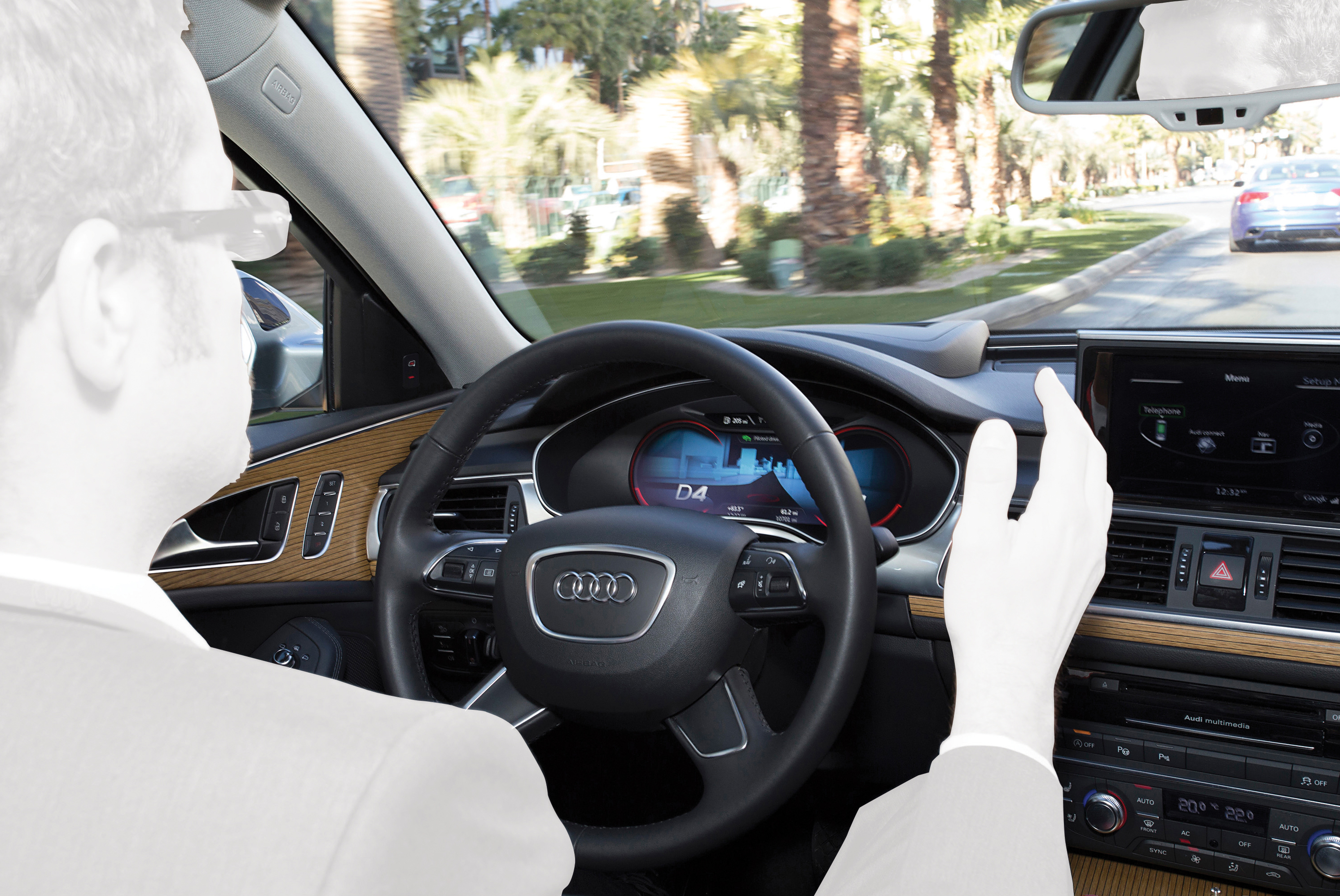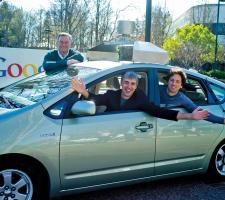
Rumors that self-driving taxis are about to hit the streets of Las Vegas have turned out to be untrue… but the age of the driverless vehicle is only just around the corner, as Pete Goldin finds out.
Between recent tests of the
“Autonomous technology is not science fiction,” notes California Senator Alex Padilla, author of the state’s new autonomous vehicle law. “We are living in the era of Moore’s Law where every two years we double our computer processing speeds. This is allowing us to make exponential leaps in advanced technology. To a large extent, that progress has made self-driving cars possible sooner, rather than later.”
Auto autonomy
It is, of couse, important to point out the difference between “automated driving” functionality and a truly “autonomous vehicle”, sometimes called a driverless or self-driving car.“There will be lots of phases during which the self-driving car will evolve,” explains Thilo Koslowski, vice president practice leader automotive, vehicle ICT and mobility at
Automated driving features that are already available in vehicles include self-parking, which enables a car to park itself; adaptive cruise control, which empowers the vehicle to autonomously brake and accelerate with the flow of traffic to maintain a given distance from other vehicles; and pre-collision braking, in which the car automatically brakes to avoid collisions.
“With an actual autonomous vehicle, the steering of the car will be taken over by the computer during significant portions of your trip,” Koslowski says. “Those technologies are not available yet… but they will launch fairly soon.”
“I think the technology is still relatively expensive,” says John Maddox, director of collaborative program strategies for the
“I believe that for the foreseeable future, there will be a person in the driver’s seat,” he adds. “They will be driving most of the time.”
That’s not something Koslowski agrees with, however. “We will see autonomous cars sooner than most people expect,” he counters. “I foresee that by the end of this decade, we will see autonomous driving vehicles on the road. But as early as the next two years, companies will talk about specific solutions they are launching into the marketplace and we will see some of the beta versions of these cars being launched over the next four years.”
These autonomous cars will be able to drive themselves on the highway, according to Koslowski, although maybe not in all weather conditions, he concedes. They may also only drive in the slow lane at first. But they will be autonomous in the sense that you can program in your destination and the vehicle will do the driving, leaving the ‘driver’ free to read a book, watch a video, or catch up on their email.
Autonomous driving is made possible by a variety of vehicle-mounted sensors and systems, including video cameras, radar and lasers, giving the system a 360 degree view of all the vehicles nearby. These systems will be augmented by GPS mapping, weather information and more. All of this data is fed into the autonomous driving software, built on complex algorithms, that will make the driving decisions and control vehicle functions.
“I see the technology already being there,” Koslowski says. “I don’t think the technology is necessarily the hold-up. There is still a lot of effort needed to optimize the technology, making these systems more reliable, and to bring down the cost of the technology, which isn’t trivial – but I think the biggest hurdles have been resolved.”
Main players
Google has been one of the leading proponents of autonomous vehicles in recent years and has a fleet of autonomous vehicles that have already logged hundreds of thousands of test miles.While Google’s contributions should not be underestimated, however, many other automotive and technology companies are working on autonomous vehicles. Audi,
“A lot of the companies involved in automated vehicle research do not want the kind of publicity that Google is getting,” says Maddox. “But knowing how the vehicle OEM community works, if they are starting to talk about about it, they are already pretty far along.
“I give Google and the car companies a lot of credit for starting the development of this technology, particularly a technology that could improve the safety of our transportation system,” he adds.
Not all the stories about driverless vehicles are true, however: one recent rumor about autonomous vehicles that has turned out to be false – despite being mentioned everywhere from the New York Times to The Telegraph – was that Google would soon be operating driverless taxis on the Las Vegas strip.
“Any rumor about driverless taxis in Las Vegas is completely untrue,” says Kevin Malone, public information officer at the Nevada Department of Motor Vehicles (DMV). “Any rumors about ‘driverless’ vehicles at all are untrue.”
Legal moves
While there is no substantiation of the driverless taxi rumor, a few states have taken the interesting step of legalizing autonomous vehicles already – albeit still requiring a driver onboard, and therefore not strictly driverless.In May last year, Nevada DMV approved Google’s license application to test autonomous vehicles on Nevada public roads. It was the first autonomous vehicle license issued in the United States.
“Nevada is allowing testing of ‘autonomous’ vehicles,” says Malone. “We have licensed three vehicles to Google, one to Audi and one to Continental. These test vehicles must have two people inside at all times: one to drive if needed, the other to run any text equipment they may have. Autonomous vehicle use by public is years off.
In September, meanwhile Californa passed Senate Bill 1298, allowing driverless cars to be operated on public roads for testing purposes, provided that each vehicle has a fully licensed and bonded operator in the driver’s seat to take control if necessary. The bill also instructs the California DMV to adopt regulations that govern the licensing, bonding, testing and operation of autonomous vehicle technology no later than 1 January 2015.
“In addition to the technical questions, there is a bevy of policy-related questions that have to be addressed,” Maddox says. “You see the beginning of that with some of the state laws that start to address policy questions like driver licensing and insurance. None of the laws that I am aware of start to address liability – that is a huge unanswered question.”
“The legislative aspect is a bigger obstacle than the technology challenges,” Thilo agrees. “There are some important questions. For example, does this mean a 12 year old could be driven in an autonomous vehicle? Does it mean you can have a couple of glasses of wine? All of these legislative questions have to be resolved.”
Maddox says the
Gaining public acceptance?
A recent study carried out by Gartner in Q4 2012 suggests the general public is willing to embrace the idea of driverless vehicles. It showed that 30% of all US vehicle owners want autonomous vehicle functionality in their next new car.
“That is a huge number,” Koslowski says. “Keep in mind that it is a technology people haven’t even experienced yet. I anticipate that once consumers actually see how it impacts their life – minimizing accidents, being more effective in a car, reducing insurance premiums, reducing fuel costs because you can drive very efficiently – I think it will be very attractive to a lot of consumers.”
Of course, there will be consumers that are apprehensive, perhaps because they do not want to lose the pleasure of driving or perhaps because they fear the technology will make government tracking or control easier. But Koslowski believes the benefits will outweigh the potential negatives in the consumer’s mind. “The autonomous vehicle could be a very significant chapter in the evolution of the automobile,” he concludes.










